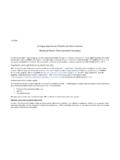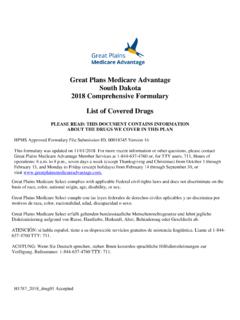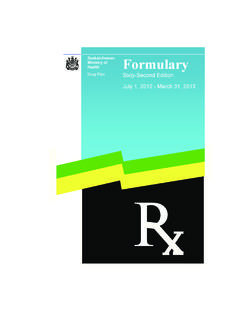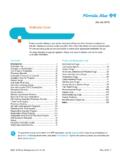Transcription of Your 2018 Formulary - myuhc.com
1 Effective January 1, 2018 your 2018 FormularySignatureValue Four-TierThis Formulary is accurate as of January 2018 and is subject to change after this date. The next anticipated update will be July 2018 . This Formulary applies to members of our UnitedHealthcare West HMO medical plans with a pharmacy benefit. your estimated coverage and copayment/coinsurance may vary based on the benefit plan you choose and the effective date of the plan. Drug tiers and cost ..4 Restrictions on what medications are covered ..6 Drugs by category ..8 Anti-InfectivesAntibiotics ..8 Antifungals ..8 Antivirals ..9 Cancer ..9 Cardiovascular/Heart DiseaseCoagulation Therapy ..10 High Blood Pressure ..10 High Cholesterol ..12 Other ..12 Central Nervous SystemAttention Deficit Disorder ..13 Depression ..13 Migraine ..13 Multiple Sclerosis ..14 Other ..14 Sedatives/Hypnotics ..15 Seizure Disorders.
2 15 Dermatology ..15 DiabetesBlood Glucose Monitoring ..17 Insulin ..17 Non-Insulin ..17 EndocrineGrowth Hormone ..18 Other ..18 Thyroid Hormone Replacement ..18 Eye ConditionsAllergies ..18 Antibiotics ..18 Glaucoma ..19 Other ..19 GastrointestinalAcid Suppression ..19 Nausea/Vomiting ..20 Other ..20 HIV/AIDS ..20 Infertility ..21 Inflammatory Conditions: RheumatoidArthritis, Crohn s Disease, Psoriasis,Ulcerative Colitis ..21 Medications for Sexual Dysfuntion ..21 Men s HealthProstate ..22 Testosterone Therapy ..22 Miscellaneous ..22 MusculoskeletalOsteoporosis ..23 Other ..24 Pain Relief ..24 Overactive Bladder ..25 RespiratoryAsthma/COPD ..25 Nasal Allergies ..25 Oral Allergies ..26 Pulmonary Arterial Hypertension ..26 Smoking Cessation ..26 Transplant..26 Vitamins/Electrolytes ..26 Women s HealthContraceptives ..26 Hormone Replacement ..29 Miscellaneous.
3 29 Prenatal Vitamins ..29 Index ..30 Table of Contents4We want to help you better understand your medication pharmacy benefit offers flexibility and choice in determining the right medication for you. To help you get the most out of your pharmacy benefit, we ve included some of the most commonly asked questions about the is a Formulary ?This document is a list of the most commonly prescribed medications. It includes both brand-name and generic prescription medications approved by the Food and Drug Administration (FDA). Medications are listed by common categories or classes and placed in tiers that represent the cost you pay out-of-pocket. They are then listed in alphabetical order. Bring this list with you when you see your doctor. It makes it easier for you and your doctor to make informed decisions about your medications and may help you save note: Where differences are noted between this Formulary and your benefit plan documents, the benefit plan documents will rule.
4 This Formulary is not a complete list of medications, and not all medications listed may be covered under your plan. Please look at your benefit plan documents provided by your employer or health plan to see which medications are covered under your plan. What is a tier?Tiers indicate the amount you pay for your prescription, which is determined by your employer or benefit plan. Tier 1 medications provide the highest overall value with the lowest out-of-pocket costs. Choosing medications in lower tiers may save you money. Ask your doctor if a Tier 1, Tier 2 or Tier 3 option could work for Cos tDrug Tier*What s CoveredHelpful Hints$ Lowest1 Medications that provide the highest overall value. Mostly generic drugs. Some brand-name drugs may also be Tier 1 drugs for the lowest out-of-pocket costs.$$ Mid-range 2 and 3 Medications that provide good overall value.
5 A mix of brand-name and generic Tier 2 or Tier 3 drugs, instead of Tier 4, to help reduce your out-of-pocket costs.$$$ Higher4 Medications that provide the lowest overall value. Mostly brand-name drugs, as well as some your doctor if a Tier 1, Tier 2 or Tier 3 option could work for you.* Some plans may have different tiers. If you have a high deductible plan, the tier cost levels may apply once you hit decides what medications are covered? Thousands of medications are already available and more come to the market regularly. Often, several medications are available to treat the same condition. The UnitedHealthcare Pharmacy and Therapeutics Committee, which includes both internal and external physicians and pharmacists, meets regularly to provide clinical reviews of all medications. Using this information, the Prescription Drug List Management Committee, which includes senior UnitedHealth Group physicians and business leaders, meets to evaluate overall health care value.
6 They also determine coverage and tier status for all is the overall value of a medication determined?Many sources and factors are considered, including: Clinical Value: How safe and effective a medication is compared to other medications used to treat the same or similar medical conditions. Cost: How much a medication costs compared to other medications used to treat similar medical conditions. Outcomes Data: Studies that show how a medication may affect total health care costs. Why are certain medications excluded?We review medications based on their total value, including effectiveness and safety, how much they cost, and the availability of alternative medications to treat the same or similar medical conditions. Certain medications may be excluded from the Formulary or subject to prior authorization (sometimes referred to as precertification)* if similar alternatives are available at a lower include medications that work the same way, but one is much more expensive than the other, or options that are available without a prescription (also referred to as over-the-counter medications).
7 There are also some instances where the same product can be made by two or more manufacturers, but greatly vary in cost. In these instances, only the lower-cost product may be covered. You should review your benefit plan documents to confirm if any medications are not part of the Formulary for your plan. You can log in to the member website listed on your health plan ID card at any time to check your medication coverage. Talk to your doctor to see if there are lower-cost options or over-the-counter medications available.*Depending on your benefit, you may have notification or medical necessity requirements for select is the difference between brand-name and generic medications?Generic medications contain the same active ingredients (what makes the medication work) as brand-name medications, but they often cost less. Once the patent of a brand-name medication ends, the FDA can approve a generic version with the same active ingredients.
8 These types of medications are known as generic medications. Sometimes, the same company that makes a brand-name medication also makes the generic if my doctor writes a brand-name prescription?The next time your doctor gives you a prescription for a brand-name medication, ask if a generic equivalent or lower-cost option is available and if it might be right for you. Generic medications are usually your lowest-cost option, but not always. For some benefit plans, if a brand-name drug is prescribed and a generic equivalent is available, your cost-share may be the copayment PLUS the cost difference between the brand-name drug and the generic often are formularies updated? Formulary changes typically occur twice per year. However, changes that have a positive impact for you such as new medications or cost savings may occur at any time. You can log in to the member website listed on your health plan ID card at any time to check your medication coverage and lower-cost options.
9 The complete Formulary is also publicly available here on and is updated on a monthly a medication change tiers?Yes. Tier changes may generally occur two times per year. When a medication changes tiers, you may pay more or less for that medication, depending on the tier change. If one of your medications changes tiers, speak with your doctor to determine if a lower-cost option may be available for there other restrictions on what medications are covered?Yes. Some medications may have additional requirements or limits depending on your benefit plan. You should review your benefit plan documents to confirm if any of these programs apply to your plan. The medications that have programs that apply are noted with letters next to them. Examples include:Age edit (AE) This medication applies to a specific age group. Members outside of this age group need to meet specific criteria for required for select markets in California and Oklahoma (E) your doctor is required to provide additional information to UnitedHealthcare to verify medical necessity of certain care reform preventive (H) This medication is part of a health care reform preventive benefit and may be available at no additional cost to care reform preventive with prior authorization (H-PA) May be part of health care reform preventive and available at no additional cost to you if prior authorization criteria is (M) The medication may be covered under medical with prior authorization (PA) Requires your doctor to provide information about why you are taking a medication to determine how it may be covered by your limits (QL)
10 Amount of medication covered per copayment or in a specific time therapy (ST) Requires you to try one or more other medications before the medication you are requesting may be m taking a specialty medication. Who can I contact for more information?Specialty medications are high-cost and are used to treat rare or complex conditions that require additional care and support. For most plans, these medications are managed through the Specialty Pharmacy Program. Take advantage of personalized support designed to help you get the most out of your treatment plan. Visit or call the toll-free phone number on your health plan ID card to learn note, not all specialty medications are listed here. If you re taking a specialty medication that is on a higher tier, call the toll-free phone number on your health plan ID card to talk with a pharmacist about finding lower-cost options or a financial assistance can I contact if I have questions about my Formulary ?

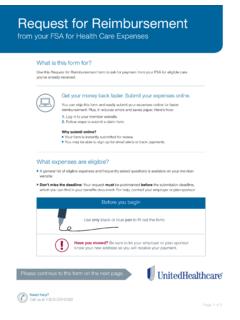
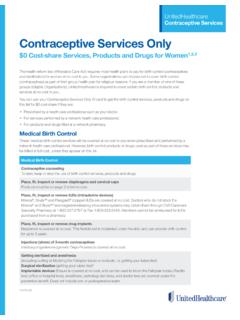
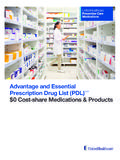
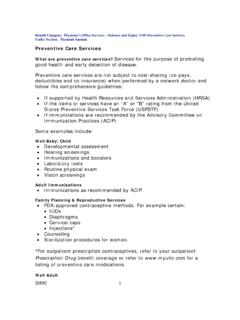
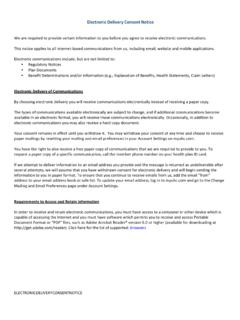
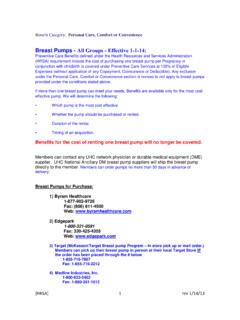
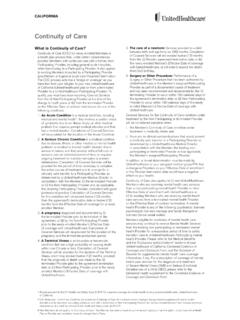
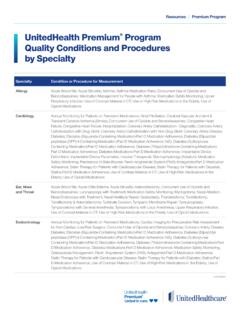
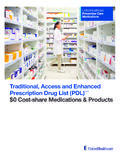

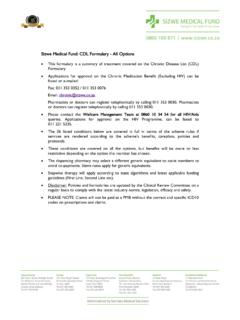
![BNF 75 (British National Formulary) March 2018 [Ed. 75]](/cache/preview/b/e/8/7/9/4/f/d/thumb-be8794fdf07a06a84c5c74e9f01f1b3f.jpg)
